As global markets experience rampant inflation, many investors are looking to alternative investment options to mitigate the potential impact on their portfolios.
While precious metals and gold are common hedges against inflation, there is growing interest in agricultural commodities as another popular way to diversify portfolio risk.
What separates agricultural commodities from traditional investments like equities is commodities can be more independent of market changes and are considered real assets. Commodities can retain value even when currency is devalued.
Soaring inflation is not negatively impacting agricultural commodities in the same way as other asset classes such as equities. As of June 2022, agricultural commodities were up 26.8% compared to December 2021 even as inflation continues to add negative pressure to global stock markets.
Further incentivizing investors to look into agricultural commodities is the current geopolitical landscape. The Russia-Ukraine War is having ripple effects across the supply chain, driving commodity prices higher.
Growing Protectionist Sentiments Are Resulting In Rising PricesThe Russia-Ukraine war has caused major disruptions in the agricultural industry — specifically, fertilizer production. Russia and Ukraine account for a substantial portion of the global fertilizer trade.
In 2020, for instance, Russia ranked as the top exporter of nitrogen fertilizers, the second-leading supplier of potassium, and the third-largest exporter of phosphorous fertilizer.
The war has disrupted exports and increased the price of fertilizer and agricultural commodities related to fertilizer such as phosphate. Between January 2020 and March 2022, nitrogen fertilizer prices increased fourfold, while phosphate and potash prices rose over threefold.
As a result, many countries are trying to reduce their dependence on Russia and other politically unstable countries that supply agricultural commodities. In September, the U.S. Department of Agriculture announced it will invest $500 million to increase domestic fertilizer production, which is double the amount of its previous commitment.
While the U.S. works on increasing domestic production, other countries are limiting exports of agricultural resources. Russia and China together account for 40% of the world’s phosphate fertilizer supply; China announced in July that it would be extending its export restrictions on phosphate fertilizer through the end of 2022 — further adding upward pressure to prices and compounding the need for more western production.
Solutions Closer To HomeCompanies like Canadian Arianne Phosphate Inc. (OTC: DRRSF), a promising phosphate mining company, are among the few in North America that can respond to the growing demand for phosphate through its high-purity phosphate concentrate.
The company’s Lac à Paul project in Quebec is a response to a growing global demand for phosphate for fertilizer – the project is the world’s largest greenfield deposit which allows the company to produce a high-purity, low-contaminant concentrate suitable for use in all applications and for a wide range of industries.
Because phosphate is an essential component in fertilizers and is used in a variety of food and industrial products, it could be a promising agricultural commodity to invest in. As the agriculture sector grows to meet demand, the need for phosphate will increase. If rising protectionist sentiments are any indication, European and North American markets might be more inclined to rely on sources closer to home than provided by a Russia- or China-based company.
ARIANNE PHOSPHATE INC. (www.arianne-inc.com) owns the Lac à Paul phosphate deposit in Quebec, Canada. Fully permitted and shovel ready, the asset is among the world’s largest greenfield deposits, capable of producing an environmentally friendly phosphate concentrate. Due to the nature of its high-purity, low-contaminant product, Arianne’s phosphate can be used to produce fertilizer as well as meeting the technical requirements of specialty applications such as the lithium-iron-phosphate (LFP) battery. The Lac à Paul deposit is rare due to its geographic location and geological structure. Arianne Phosphate is listed on both the TSX-V: DAN and the OTCQX: DRRSF.
This post contains sponsored advertising content. This content is for informational purposes only and is not intended to be investing advice.
This information contains forward looking statements. All statements, other than statements of historical fact, included herein, including without limitation, statements regarding potential mineralisation and reserves, exploration results and future plans and objectives of Arianne Phosphate Inc, are forward-looking statements that involve various risks and uncertainties. There can be no assurance that such statements will prove to be accurate and actual results and future events could differ materially from those anticipated in such statements. Important factors that could cause actual results to differ materially from Arianne Phosphate Inc’s (“Arianne Phosphate” or the “Company”) expectations are disclosed under the heading "Risk Factors" and elsewhere in Arianne Phosphate Inc’s documents filed from time-to-time with the TSX Venture and other regulatory authorities.
Contact DetailsBrian Ostroff, President
Company Website
